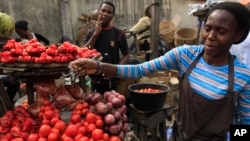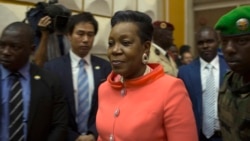The West African nation of Senegal became the most recent country to commit to the fight against hunger under a new global initiative for Africa in November. Announced by President Barack Obama in May 2012 on the eve of the G8 Summit, the New Alliance for Food Security and Nutrition represents a commitment by donors, African governments, and the private sector to lift 50 million people in Sub-Saharan Africa out of poverty by 2022. The U.S. contributes to the New Alliance as part of its global hunger and food security initiative, Feed the Future.
Jonathan Shrier is Acting U.S. Special Representative for Global Food Security. He said the New Alliance has made progress:
“We’ve seen over $3.7 billion of private investment mobilized through the New Alliance. We’ve seen hundreds of billions of dollars of development assistance from donors lined up through the New Alliance and we’ve seen important policy changes committed to by African governments to help improve the climate for business activity, for private sector activity.”
The New Alliance and Feed the Future both support country-driven approaches to development with input and collaboration from local organizations and leaders to ensure lasting results for smallholder farmers and their families.
There are currently 19 countries worldwide that are the focus of Feed the Future.
Under Feed the Future, each country develops an investment plan and an implementation road map, works with the United States on strategies and makes policy changes where necessary to improve conditions for agricultural and private-sector investment.
The United States then invests in programs that align with the country’s development plan and partners with the private sector to boost growth in emerging markets. Investments include research and development on more resilient crops, initiatives that help connect farmers to buyers, and efforts to support women in agriculture.
Both programs represent the U.S. commitment to look beyond traditional development methods for long-term solutions to hunger, said Special Representative Shrier:
“We do it through an overall concept, an overall approach that is really innovation in development assistance. It’s really an example of following the countries’ own leadership, developing clear targets for our own work, tracking our progress through a rigorous monitoring and evaluation system and then adjusting our programming as conditions and as our results dictate. So, it really is an innovation.”
Jonathan Shrier is Acting U.S. Special Representative for Global Food Security. He said the New Alliance has made progress:
“We’ve seen over $3.7 billion of private investment mobilized through the New Alliance. We’ve seen hundreds of billions of dollars of development assistance from donors lined up through the New Alliance and we’ve seen important policy changes committed to by African governments to help improve the climate for business activity, for private sector activity.”
The New Alliance and Feed the Future both support country-driven approaches to development with input and collaboration from local organizations and leaders to ensure lasting results for smallholder farmers and their families.
There are currently 19 countries worldwide that are the focus of Feed the Future.
Under Feed the Future, each country develops an investment plan and an implementation road map, works with the United States on strategies and makes policy changes where necessary to improve conditions for agricultural and private-sector investment.
The United States then invests in programs that align with the country’s development plan and partners with the private sector to boost growth in emerging markets. Investments include research and development on more resilient crops, initiatives that help connect farmers to buyers, and efforts to support women in agriculture.
Both programs represent the U.S. commitment to look beyond traditional development methods for long-term solutions to hunger, said Special Representative Shrier:
“We do it through an overall concept, an overall approach that is really innovation in development assistance. It’s really an example of following the countries’ own leadership, developing clear targets for our own work, tracking our progress through a rigorous monitoring and evaluation system and then adjusting our programming as conditions and as our results dictate. So, it really is an innovation.”

















